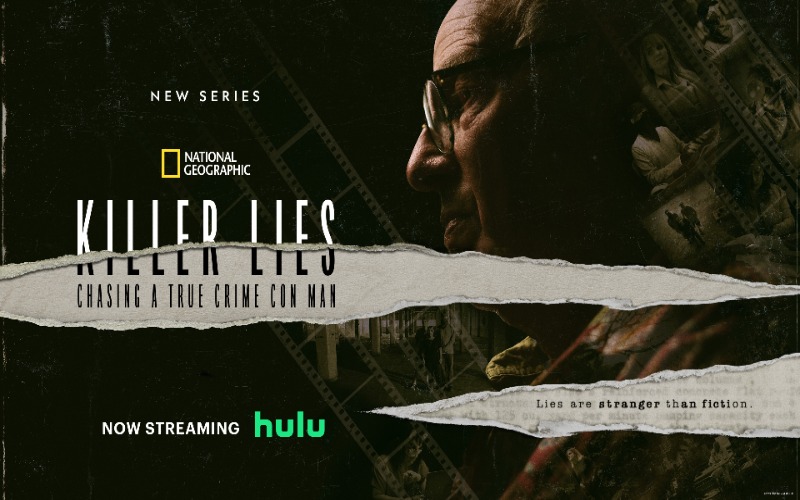Based on Lauren Collins’s 2022 New Yorker exposé “Murder, He Wrote,” the new National Geographic series Killer Lies: Chasing a True Crime Con Man expands on the rise and fall of Stéphane Bourgoin, a self-proclaimed serial killer expert whose fabricated stories and fraudulent claims went unchallenged for decades. Bourgoin’s narrative began to crumble when a group of dedicated online sleuths, known as 4th Eye (4ème Oeil Corporation), took it upon themselves to expose the truth. Through their dogged investigation, the team uncovered the extent of Bourgoin’s deception, revealing how technology was not just a tool but an essential ally in their quest for truth.
In our new exclusive interview with Maat, a prominent computer sleuth from the new series, we delve into the pivotal role technology played in unraveling one of the most shocking deceptions in the true crime world. In this interview, Maat shares insights into how digital tools, from internet searches to social media, were instrumental in piecing together the evidence that ultimately brought Bourgoin’s lies to light.
Innovation & Tech Today: In what ways did technology influence the way you and your team approached the case of Stéphane Bourgoin?
Maat: To be honest, in the beginning, we did not use any technology for the case of Stéphane Bourgoin. Our eyes and our ears were the only tools we used. As it was not in our plans to dig deeper into his story. We thought that books and interviews on TV would be enough.
It became clear over time that we needed the power of the internet. We needed it for the most important thing: to be able to talk to each other every day. It is the most important thing, and let’s say, it was the first step of this story. Then, we needed the technology to analyze some info. To compare some facts that were unavailable in our respective countries (Quebec, Belgium, and France). For example, we used a website to find the man who killed his fictive girlfriend (https://www.latimes.com/projects/la-me-death-row/).
There were approximately 730 death row inmates. We filtered searches on this website to try to find the one we were looking for. If this website had not existed, it would have been impossible to do so. We also used some websites to obtain some books that were not translated in our respective countries. Also, it was just a blessing to use the technology because it helped us to get in touch with unreachable people such as John Douglas or Micki Pistorius (we can say she is now what we can call a friend. And for us, it is still amazing. Thanks to technology). I would like to add the following: It is strange to use “machines” and end up sharing a strong friendship with people we have never met. It is a really strange feeling but also a very cool one.
I&T Today: How would you describe the importance of digital tools in your investigation?
Maat: We can summarize the importance of digital tools in our investigation with one word: Essential! What we did would have been impossible at the beginning of the 2000s. The Internet is now the universal encyclopedia. Things are never lost on it. Sometimes, it is hard to find something, but there is always a place where you will find what you are looking for. And as one member of our team says: “With technology, now the voices remain, and everybody can listen to it, even after many years. Before the internet, writings remained, and the voices were forgotten. And unfortunately for Stéphane Bourgoin, all the lies he has told during the past 40 years are available on the web. So, it was a blessing for us.
I&T Today: Were there any digital strategies that stood out as particularly effective in your investigation?
Maat: Honestly, all the strategies we used were important. We used everything we could as a whole, like a flawlessly fitted puzzle, with each piece representing a digital strategy. Everything was made to function together. But if we had to pick one or two standout strategies, it would be the simple ones: sending emails and posting our video on YouTube.
I&T Today: How has the evolution of technology impacted investigations like this one?
Maat: It impacted our investigations by simplifying a task that a few years before may have required an enormous work. Of course, for some elements, it took longer to obtain what we needed, but the internet made it simple to obtain all the information. Sometimes, we just need to be patient. I wonder how much time we would have spent working on this story if we had used the old-fashioned ways (paper sheets, etc.). We made it within a ten-month timeframe. It might have lasted at least two years if there had not been the internet.
I&T Today: Were there any moments when technology hindered rather than helped your investigation?
Maat: Technology did not hinder our investigation. The only instance in which we faced difficulties was when our YouTube channel was removed. We think the reason is that they used an algorithm after Bourgoin’s “lawyer” contacted them for a violation of the author’s rights. We believe that after being approached by Bourgoin’s “lawyer” for alleged authorship rights violations, they used an algorithm. We suppose that none of our videos were viewed by those seated in front of computers at YouTube’s headquarters. They were removed for no apparent reason. Perhaps a better algorithm should be developed (but this is just a supposition; we do not know if YouTube employees are actually watching or if they are trusting in the software).
I&T Today: How do you see the relationship between technology and the pursuit of truth in modern investigations?
Maat: The same word used in question two: Essential! I believe it will evolve into the standard method for conducting investigations over time. It is only the beginning: in a few years, it will be the sole approach.
Watch the new series Killer Lies: Chasing a True Crime Con Man on Hulu!











